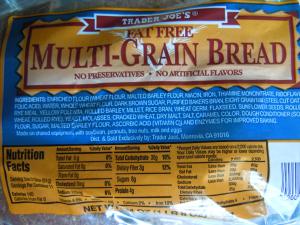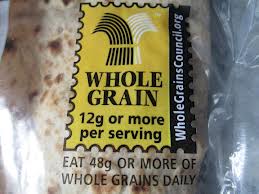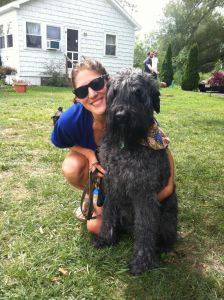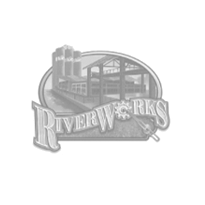The Whole Truth About Whole Grain Bread

When it comes to processed grain products like breads, cereals, and crackers, it's difficult to know what the healthiest choice is. A whole grain is a grain that has not been stripped of its bran or germ before processing. We know whole grains are important, but are we really getting whole grains when we buy a loaf of wheat bread? If you had to choose between 3 products, one labeled "Made with Whole Grain", another labeled "Multigrain", and the third labeled "12-Grain", which bread would you believe is healthiest? What if I told you all of these breads are closer to white bread than to whole wheat bread? Food companies know their customers are more health conscious than ever these days, and they choose clever marketing terms to cash in on it.
The truth is, terms like "Stoneground", "Multigrain", and "Made with Whole Grains" have no legal definitions, so companies can use these terms however they want. A cereal labeled "Made with Whole Grains" might really be a sugary blend of corn and white flour, with a little bit of whole grain oat flour added near the bottom of the list. Some companies may even add coloring to mimic the natural dark tint associated with whole grain products.

How can you make sure you're getting the product you think you're getting? Reading the ingredient list is really the only way. The first ingredient should be whole grain flour. It might be whole grain wheat, corn, rye or oat, but it should say whole grain. On the front of the package you might see "Whole Wheat", or "100% Whole Wheat", both of which have legal definitions that require whole wheat to be the primary ingredient. You can also look for the Whole Grain Council's Whole Grain Stamp to give you an idea of how much whole grain is in the product. This doesn't mean your Multigrain bread isn't a whole grain choice, but you have to investigate to be sure.
And don't forget that even though products like bread, crackers, and cereals are made with whole grains, they're still processed. Incorporate more unprocessed whole grains like brown rice, steel cut oats, quinoa, pearl barley, or bulgur into your diet to make sure you're getting all the nutrients you need to be your best.

I know this is confusing, so here's a glossary of terms that require further investigation for quick reference.
Read the ingredient list if you see:
100% Whole Wheat: these products have whole grain wheat as the primary ingredient
Multigrain: the means the product contains more than one type of grain, not necessarily whole grains
Wheat Flour: wheat flour typically refers to refined flour, not whole wheat
Whole Grain or Made with Whole Grain: this indicates the product contains a whole grain of some kind, but the product could be mostly white flour or other refined grain
12-Grain: similar to multigrain, this term means the product has 12 types of grain, but they aren't necessarily whole grains
Good luck!
Katie

Katie Schaeffer has a master's in dietetics, focusing on improving urban food environments. She has a background in environmental science, agriculture and nutrition. A 15 year vegetarian, Katie advocates eating a mostly local, plant based diet to improve health and the environment. She is a member of the Academy of Nutrition and Dietetics, the Western New York Dietetics Association, and the Dietitians in Integrative and Functional Medicine practice group. In her spare time, she enjoys cooking meals for friends and family, singing with the Buffalo Choral Arts Society and the Buffalo Philharmonic Chorus, and making her own clothes. She loves a good road trip and experiencing new places and new foods. Katie lives in Buffalo with her husband Hill and their dog Brody (pictured above). Her favorite food is tofu. Not really. It's actually coconut cake.




